 A walk through Dorobanți neighborhood, in the area with streets that are named after capitals and countries, can turn into an expedition in which the revelation is the discovery of hidden treasures. Anytime, after a street corner or in a small square, real jewels can appear: a house with a story, a museum, a monument, a small park that evokes an international personality that influenced at one time the fate of the Romanians or, it can go on the footsteps of some great Romanians.
A walk through Dorobanți neighborhood, in the area with streets that are named after capitals and countries, can turn into an expedition in which the revelation is the discovery of hidden treasures. Anytime, after a street corner or in a small square, real jewels can appear: a house with a story, a museum, a monument, a small park that evokes an international personality that influenced at one time the fate of the Romanians or, it can go on the footsteps of some great Romanians.
A fairy-tale neighborhood
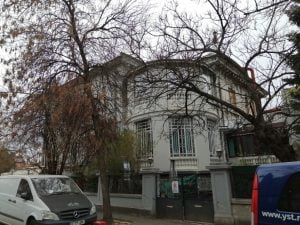
This is how I discovered the “beautiful Bucharest woman” house on Rabat Street or the National Museum of Old Maps and Books on London Street, small parks Napoleon III or Khalil Gibran.
Also, great architects, school creators who built the symbol edifices of the Romanian capital, left traces in this part of the city. During the evolution of Bucharest, the successive authorities modified the former estate of an old family of boyars and named it after it – “Filipescu Park” (later called “Filipescu Parceling”), but also the area they named in the municipal planning “Dorobanți Parceling”. Thus, it turned out a neighborhood with cosmopolitan nuances, which evokes, preserving the proportions, the historical values of the country, but also of other continents.

There are certainly many treasures to be discovered and many stories to tell. The traveler arriving in this fairy-tale neighborhood can enjoy a walk through a “maze” in which time flows differently, on the streets with eclectic and elegant buildings, with a vegetation that allows games of light and shadow depending on the time of day, or season. And he can see this walk as a leisure or as a history lesson.
The houses of some personalities
Next we propose to run the “The Ariadne’s thread” on Sofia, Sofia Street.
We start from Dorobantilor Square, on the other side of the “slice of cake” that Sofia Street forms with Ankara Street. And we discover, hidden by vegetation, buildings historical monument, in some being even elegant restaurants that, in their turn, promise gastronomic “treasures” from the Romanian or international cuisine.
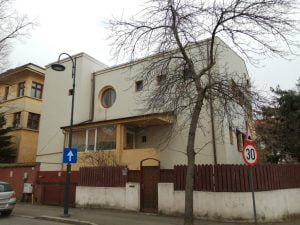
Built between 1922-1924, the building at number 21 is “Scarlat-Caragiale House” and was built according to the plans signed by the architect Duiliu Marcu. The robust, elegant villa, with ground floor and attic, has at each level different decorations. However, the construction reflects the sober style of the author.
Later, in 1934, also following the plans of the architect Duiliu Marcu, the house of Prof. Mircea Djuvara was erected. We can admire the Art-Deco elements of the building on Sofia Street, at number 16.
At number 24, we discover a building with Art Deco windows, while, in the vicinity, the villa at number 22 has the elements characteristic of the neo-Romanian style: wooden inserts, half arches tri foliated above the front door.
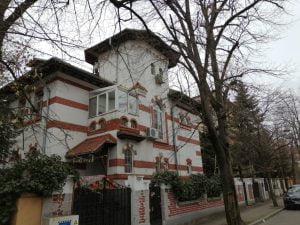
The house at number 20 attracts our attention through the specific tower of peasant fortress, decorated with apparent brick belts.
All three buildings were classified as historical monuments.
On the side with uneven numbers, we also find buildings in this category at numbers 11, 7, 5 and 1.
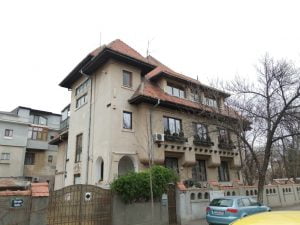
But let’s return to the side with even numbers, where at number 2, massive, majestic with wooden inserts at the top and hidden by vegetation, the villa (also in the category of historical monuments) has a retreat. Next to it, the street turns at a right angle to open in Căpitan Gheorghe Demetriade Street.
Many places are waiting to be discovered
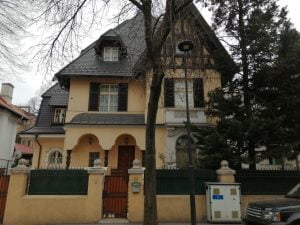
In its course, the “The Ariadne’s thread”, which guided us on Sofia Street, left, at the intersection with Ermil Pangrati Street (former Minister of Public Works with responsibilities in systematizing the city, including the area we were crossing), a small square where the statue of academician Elie Wiesel – Holocaust survivor, winner of the Nobel Peace Prize in 1986. The connections of this personality with Romania are well known.
And from the end of Sofia Street, which “melts” in Capitan Gheorghe Demetriade Street, passing by the park in which the statue of Monsignor Vladmir Ghika is located, we can admire the opening towards Aviatorilor Boulevard and no less the famous Monument to the Heroes of the Air.
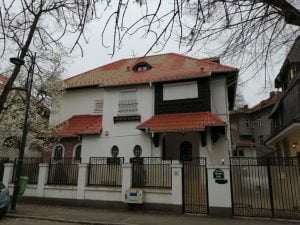
Departing from the statue of Monsignor Vladmir Ghika, who was beatified in 2013, we can reach the French Church “Sacre Coeur”, located right on Căpitan Gheorghe Demetriade Street.
If we choose to go to Aviatorilor Boulevard it is obligatory to stop at the Monument to the Heroes of the Air, which was dedicated to the Romanian military and civil aviators.
It is important to mention that the Monument of the Heroes of the Air belongs to the sculptors Lidia Kotzebue and Iosif Fekete and was erected between 1928-1935, namely during the same period when the neighborhood with streets named after capitals and countries, that we’ve traveled, was completed.



